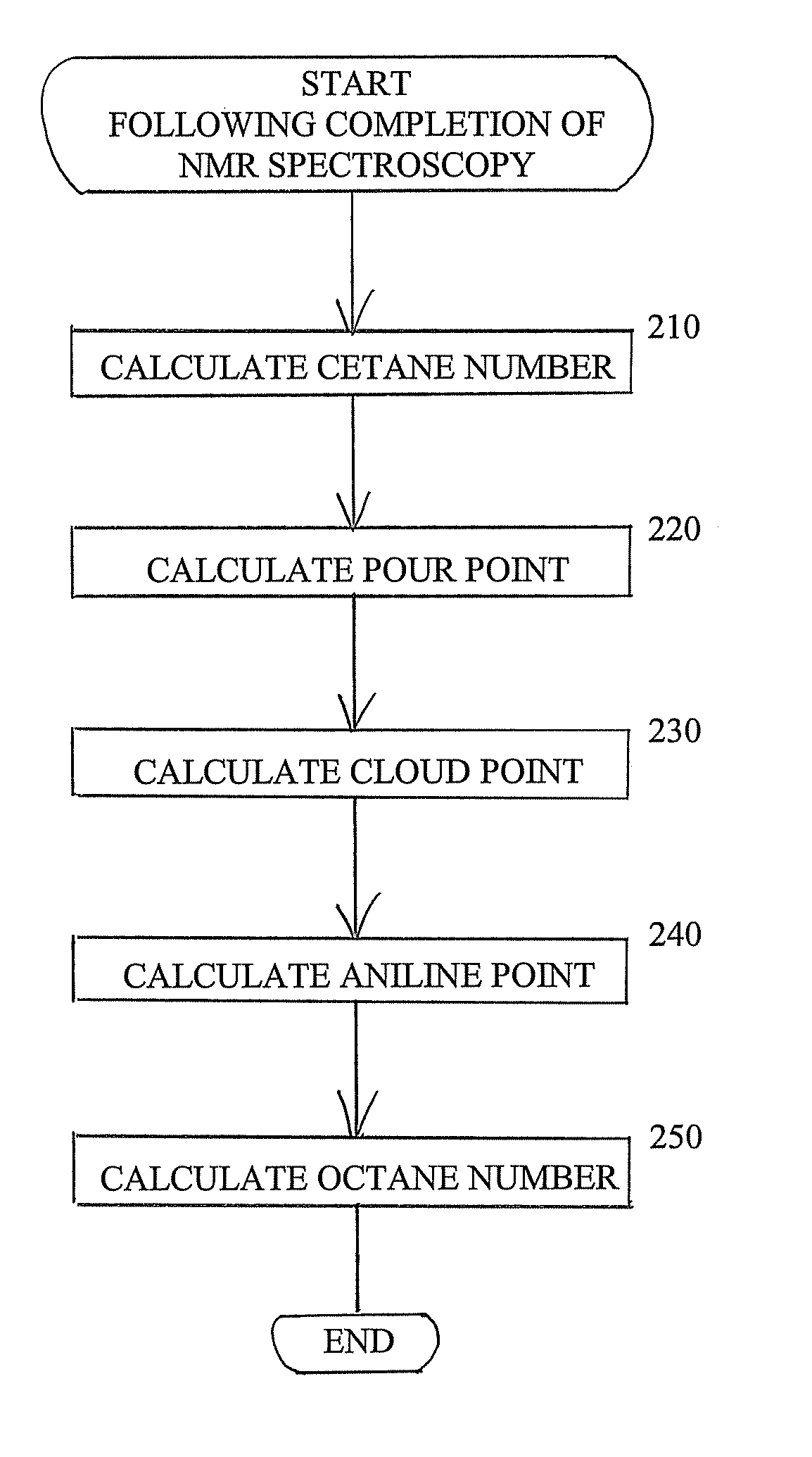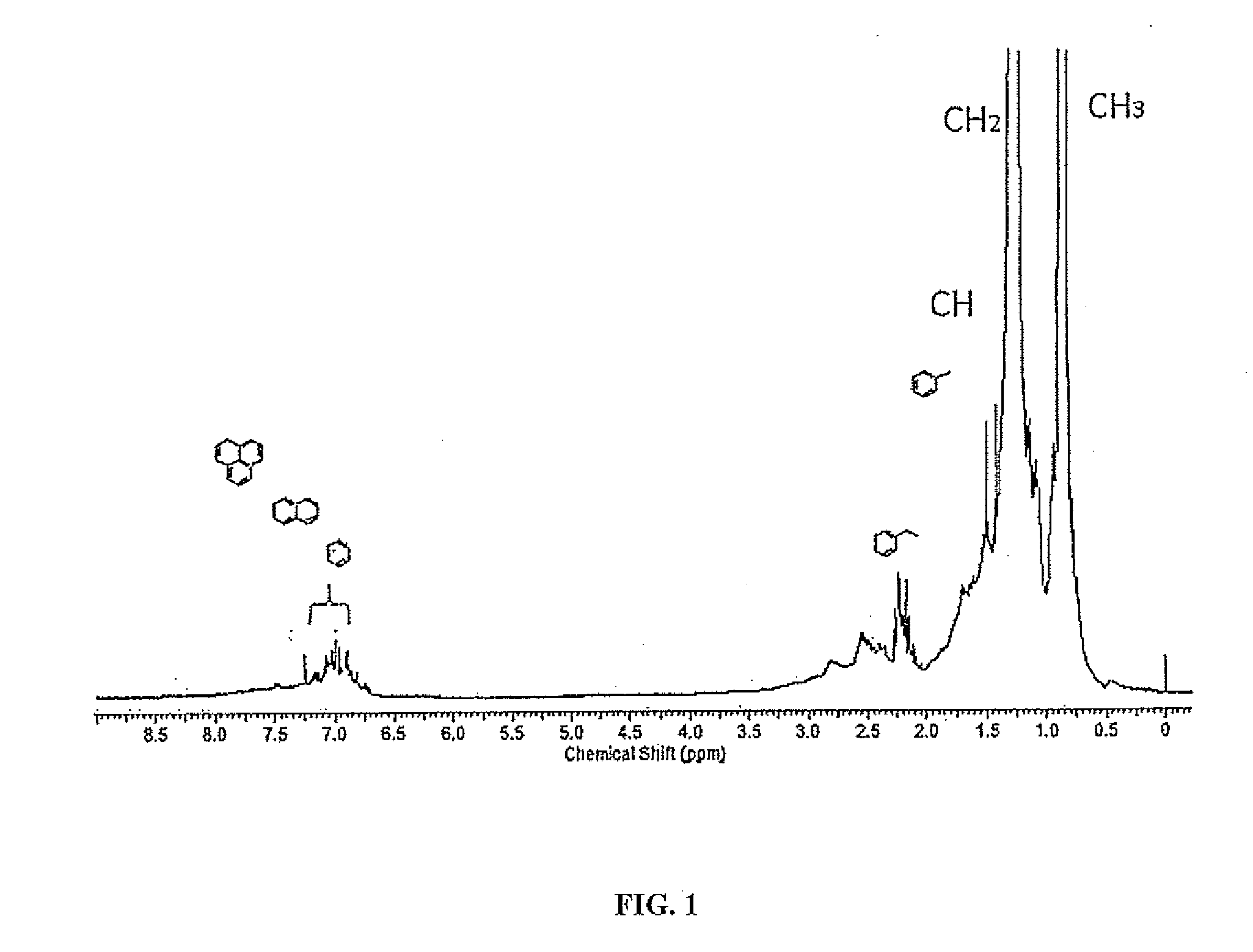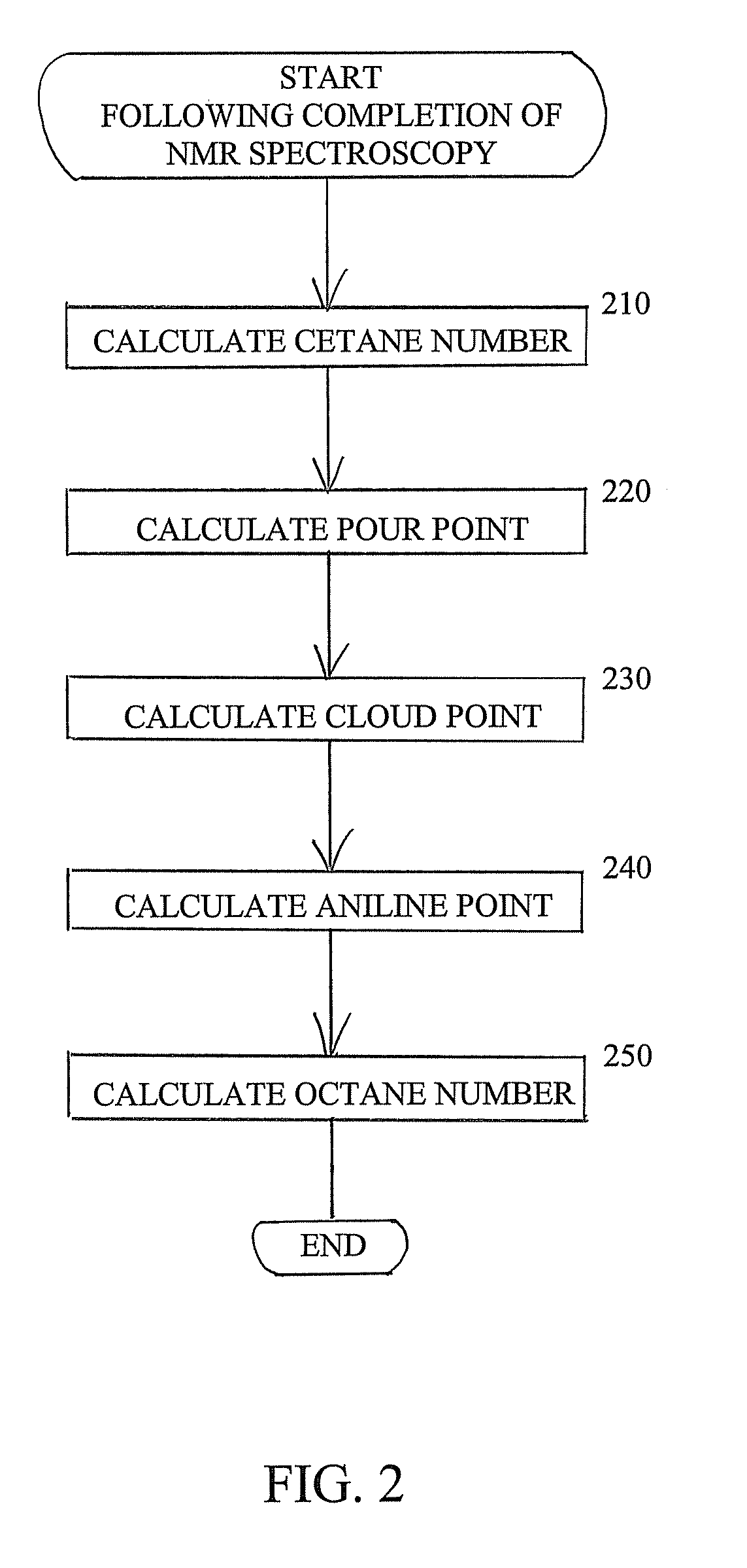Characterization of crude oil by nmr spectroscopy
- Summary
- Abstract
- Description
- Claims
- Application Information
AI Technical Summary
Benefits of technology
Problems solved by technology
Method used
Image
Examples
first embodiment
[0030]In a first embodiment when the only input is a 13C NMR spectra of crude oils, the indicative properties (i.e., the cetane number, pour point, cloud point, aniline point and octane number) of the gas oil fraction boiling in the range 180-370° C. can be predicted from the aromathic, naphthenic and paraffinic carbon content determined by 13C NMR spectra. That is,
Indicative Property=f(13C NMR Compositioncrude oil)
[0031]Equations (2) through (6) are detailed examples of this relationship.
Cetane Number (CET)=X1CET*CN+X2CET*CP+X3CET*CA+X4CET*CN2+X5CET*CP2+X6CET*CA2 (2);
Pour Point (PP)=X1PP*CN+X2PP*CP+X3PP*CA+X4PP*CN2+X5PP*CP2+X6PP*CA2 (3);
Cloud Point (CP)=X1CP*CN+X2CP*CP+X3CP*CA+X4CP*CN2+X5CP*CP2+X6CP*CA2 (4);
Aniline Point (AP)=X1AP*CN+X2AP*CP+X3AP*CA+X4AP*CN2+X5AP*CP2+X6AP*CA2 (5);
Octane Number (RON)=X1RON*CN+X2RON*CP+X3RON*CA+X4RON*CN2+X5RON*CP2+X6RON*CA2 (6);
[0032]where:
[0033]CN=1H NMR-CH3 protons of alkyl chains γ or further from aromatic ring or CH3 of saturated compounds (...
second embodiment
[0037]In a second embodiment when density is considered in addition to a 13C NMR spectra of crude oils, the indicative properties (i.e., the cetane number, pour point, cloud point, aniline point and octane number) of the gas oil fraction boiling in the range 180-370° C. can be predicted from the whole crude oil density and aromathic, naphthenic and paraffinic carbon content determined by 13C NMR spectra. That is,
Indicative Property=f(densitycrude oil,13C NMR Compositioncrude oil) (7);
[0038]Equations (8) through (12) are detailed examples of this relationship.
Cetane Number (CET)=X1CET*DEN+X2CET*CN+X3CET*CP+X4CET*CA+X5CET*CN2+X6CET*CP2+X7CET*CA2 (8);
Pour Point (PP)=X1PP*DEN+X2PP*CN+X3PP*CP+X4PP*CA+X5PP*CN2+X6PP*CP2+X7PP*CA2 (9);
Cloud Point (CP)=X1CP*DEN+X2CP*CN+X3CP*CP+X4CP*CA+X5CP*CN2+X6CP*CP2+X7CP*CA2 (10);
Aniline Point (AP)=X1AP*DEN+X2AP*CN+X3AP*CP+X4AP*CA+X5AP*CN2+X6AP*CP2+X7AP*CA2 (11);
Octane Number (RON)=X1RON*DEN+X2RON*CN+X3RON*CP+X4RON*CA+X5RON*CN2+X6RON*CP2+X7RON*CA2 (1...
third embodiment
[0042]In a third embodiment when the only input is a 1H NMR spectra of crude oils, the indicative properties (i.e., the octane number, pour point, cloud point, aniline point and octane number) of the gas oil fraction boiling in the range 180-370° C. can be predicted from the aromathic, naphthenic and paraffinic carbon content determined by 1H NMR spectra. That is,
Indicative Property=f(1H NMR Compositioncrude oil) (13);
[0043]Equations (2) through (6) can be applied as detailed examples of this relationship, where CN, CP, and CA are as defined before, and constants X1CET-X6CET, X1PP-X6PP, X1CP-X6CP, X1AP-X6AP, and X1RON-X6RON are given in Table 5.
TABLE 5CetanePour CloudAnilineOctaneNumberPointPointPoint NumberProperty(CET)(PP)(CP)(AP)(RON)X1−626.8−4361.5−2140.8−620.32504.3X2−2545.8−2815.3−3317.9−38.7−8517.3X337798.556783.650969.36716.184573.1X4692.87448.93728.6931.3−3537.2X52372.42888.73172.0139.77837.1X6−415665.2−625842.1−561527.6−79178.8−921508.7
PUM
 Login to View More
Login to View More Abstract
Description
Claims
Application Information
 Login to View More
Login to View More - R&D
- Intellectual Property
- Life Sciences
- Materials
- Tech Scout
- Unparalleled Data Quality
- Higher Quality Content
- 60% Fewer Hallucinations
Browse by: Latest US Patents, China's latest patents, Technical Efficacy Thesaurus, Application Domain, Technology Topic, Popular Technical Reports.
© 2025 PatSnap. All rights reserved.Legal|Privacy policy|Modern Slavery Act Transparency Statement|Sitemap|About US| Contact US: help@patsnap.com



